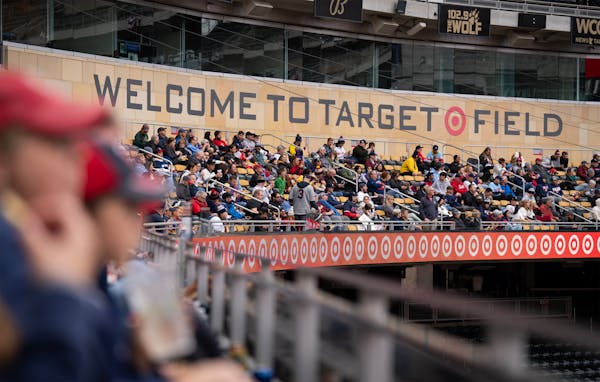Hennepin County leaders want state lawmakers to make the sales tax used to build Target Field permanent so most future revenue can pay for county health care infrastructure.
The proposal also would create a dedicated funding source to maintain and improve the stadium, and calls for a guarantee from the Twins to stay at Target Field for decades, an idea welcomed by the team's CEO.
The idea faces some hurdles; it would require the support of the Legislature, and tax changes are always controversial at the Capitol — particularly when they involve extending a tax set to expire. The sales tax and Hennepin County's role in building Target Field were initially controversial, but the project is now widely credited with spurring revitalization in the North Loop of Minneapolis.
The money Hennepin County borrowed to cover its $355 million share of building the $555 million ballpark is almost paid back. If nothing changes, the 0.15% sales tax, collected since 2007 and raising more than $50 million annually, will sunset by the end of the decade.
A bill introduced Monday at the Legislature would dedicate about $40 million a year from the sales tax toward future improvements at HCMC and other county-owned health care facilities. County officials estimate the safety-net hospital and trauma center in Minneapolis needs more than $1.5 billion in upgrades over the next 15 years.
"This is an important asset. It's critical for the county and the state," County Administrator David Hough said of the need to keep up with HCMC's infrastructure needs.
County officials and leaders of Hennepin Healthcare System, which oversees HCMC and several clinics, want to build a new inpatient hospital tower at the corner of South Eighth Street and Chicago Avenue. But first the parking ramp there needs to be razed.
Some of the more than one dozen other county-owned health care clinics also have anticipated facility needs.
Joe Matthews, the county's chief financial officer, estimates that reallocating the existing sales tax would raise enough to cover annual payments on about $800 million worth of debt. It would mean county officials need to rely less on property taxes for needed improvements.
"This would cover a big chunk of [the cost]," Hough said.
For the Twins, the change would send $9 million a year to a capital improvement fund managed by the Minnesota Ballpark Authority. The county would also allocate three yearly payments of $3 million for maintenance and, after that, $1 million a year.
In exchange, the Twins would extend their current 30-year lease to keep the team in Minneapolis until at least 2059. The team would also contribute $4.5 million a year to the ballpark capital improvement fund.
Dave St. Peter, Twins president and CEO, said the proposal would be a welcome continuation of what he called a successful public-private partnership with Hennepin County. He said the team is committed to keeping the ballpark among the best in Major League Baseball.
"We embrace the effort to look after Target Field for the next generation of fans," St. Peter said. "We think it is a great success story, inside and outside the ballpark."
Other spending commitments put in place when the sales tax was approved would not change. The $2 million a year set aside from the tax for youth sports and activities as well as the $2 million dedicated to extended hours at county libraries would continue as long as the sales tax is collected.
The Twins technically lease Target Field from the ballpark authority, an oversight board that manages the stadium. Hennepin County spends about $3 million a year to help cover the authority's operations and other costs.
Dan Kenney, executive director of the ballpark authority, said the team has spent about $60 million on improvements since Target Field opened. The ballpark authority has spent about $20 million and often costs are divided between them.
For instance, in January, the authority and the team agreed to split the $350,000 cost of hiring a consultant to determine the overall condition of the ballpark, how it compares to other major league facilities, and what is needed to keep the stadium in top shape.

How Minnesota House Republicans ended the DFL's state government trifecta
Project 2025 platform proposal aims to allow mining in Boundary Waters watershed

Ann Johnson Stewart wins special election, giving DFL control of Minnesota Senate

Democratic U.S. Sen. Amy Klobuchar defeats GOP challenger Royce White



